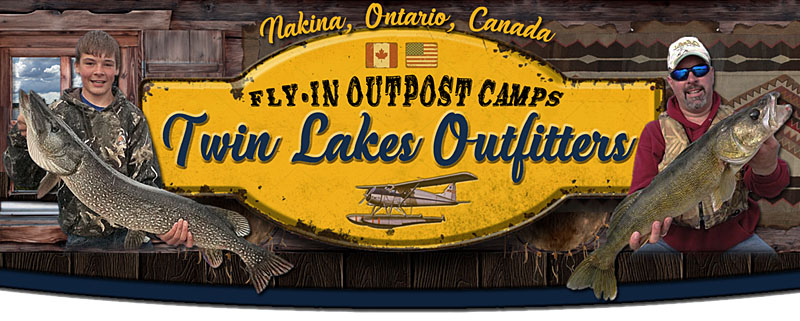



Migration:
Brook Trout need lots of oxygen and a water temperature of 53 degrees or colder. Because of this, Brook Trout actively migrate up and down the rivers all year looking for the right conditions. In the spring, the Brook Trout are easy to find. Any river section with a rapids or strong current will hold the trout. As the season changes into summer, the Brook Trout get ready to migrate. Warm surface water flows out of the lakes and into the rivers. At the mouth of the river, the water is too warm for trout so they migrate down stream. As the water runs through rocks it cools down. Also, subterranean water and natural springs run into the river thus cooling the water. So in the summer months, odds are you will have to travel down stream until the water is cool. The exact opposite can be true. If the headwater for a creek is a cold spring-fed lake, then the Brook Trout will travel farther up stream to the cooler temperatures. You have to look at the water source to determine where they will be.
Baits and Lures:
Fishing for Brook Trout is similar to river fishing for Rainbow Trout. Small spinners like #0 Mepps or #0 Blue Foxes work best. They will also hit worms and natural bugs like Grasshoppers or May Flies. Fly fishing with artificial flies is an excellent method. The most convenient bait for river fishing is the Berkley Trout Bait. It's a smelly doe that molds like Silly Putty. If you purchase a bottle, make sure it's the floating. A small jar will last all day and it fits into your pocket. Just roll up a small bit into a round ball the size of a salmon egg and put it on your hook. When Brook Trout fishing you should use 6 or 4-pound test line with really small hooks. The most popular hooks for trout are the Eagle Claw Laser Sharp trout hooks. If you are an experienced river fisher-person, then you would just use what you like best.
Trout Floats:

A great way to fish the slow moving pools or deep rapids is with a Saugeen River Trout Float Rig. You still use light line with trout bait but the setup is a little different. You have to estimate the depth of the water. Let say it's three feet deep. Put a trout float on your line about 2.75 feet up from your hook. Every 6 inches you would want to put a very tiny sinker on the line. Use the smallest you can find.
The purpose of the sinkers is to control the way your bait floats down stream. With this method, your bait will be almost straight down from your float as it moves down stream. So what's the purpose? When a fish hits your line your float reacts at once. It also keeps your bait just off bottom and it prevents your line from floating sideways, which causes snags.
Suckers:
If you go to a river mouth in the spring, you may see millions of suckers spawning. The suckers come out of the lakes and travel down or up stream. They usually only go a couple hundred yards. The problem is all the Brook Trout in the area will gorge themselves on the sucker eggs. So if the Suckers are spawning, you may have to go 1000 yards up or down stream before you find hungry Brook Trout.
In a larger river, the Brook Trout will stay at the base of a rapids or waterfalls. You may find them in deep pools but generally they like bubbles in the water. The most important aspect of Brook Trout fishing is how to approach the area you want to fish. Brook Trout spook very easily. If you see a part of the river that looks like a good spot, walk through the bush until you are below the spot and approach it from down-stream. Cast up stream of the area you want to fish and let your bait float over the selected area.
Be Nice:
Please always wet your hands before touching a Brook Trout. They have very sensitive skin and if you hold one with dry hands you will rub the protective layer of slim off their skin and the trout will die of infection. Please only keep what you eat.